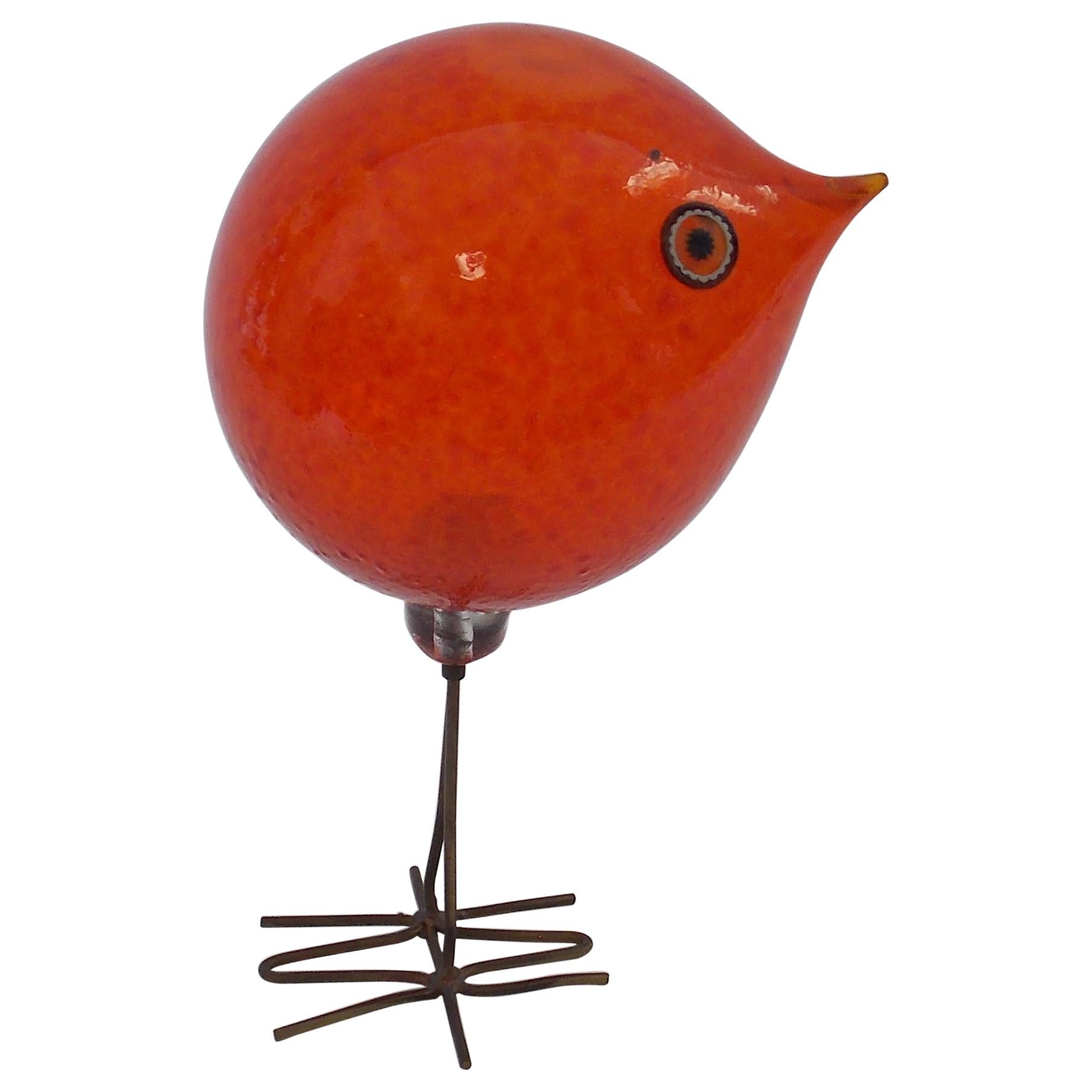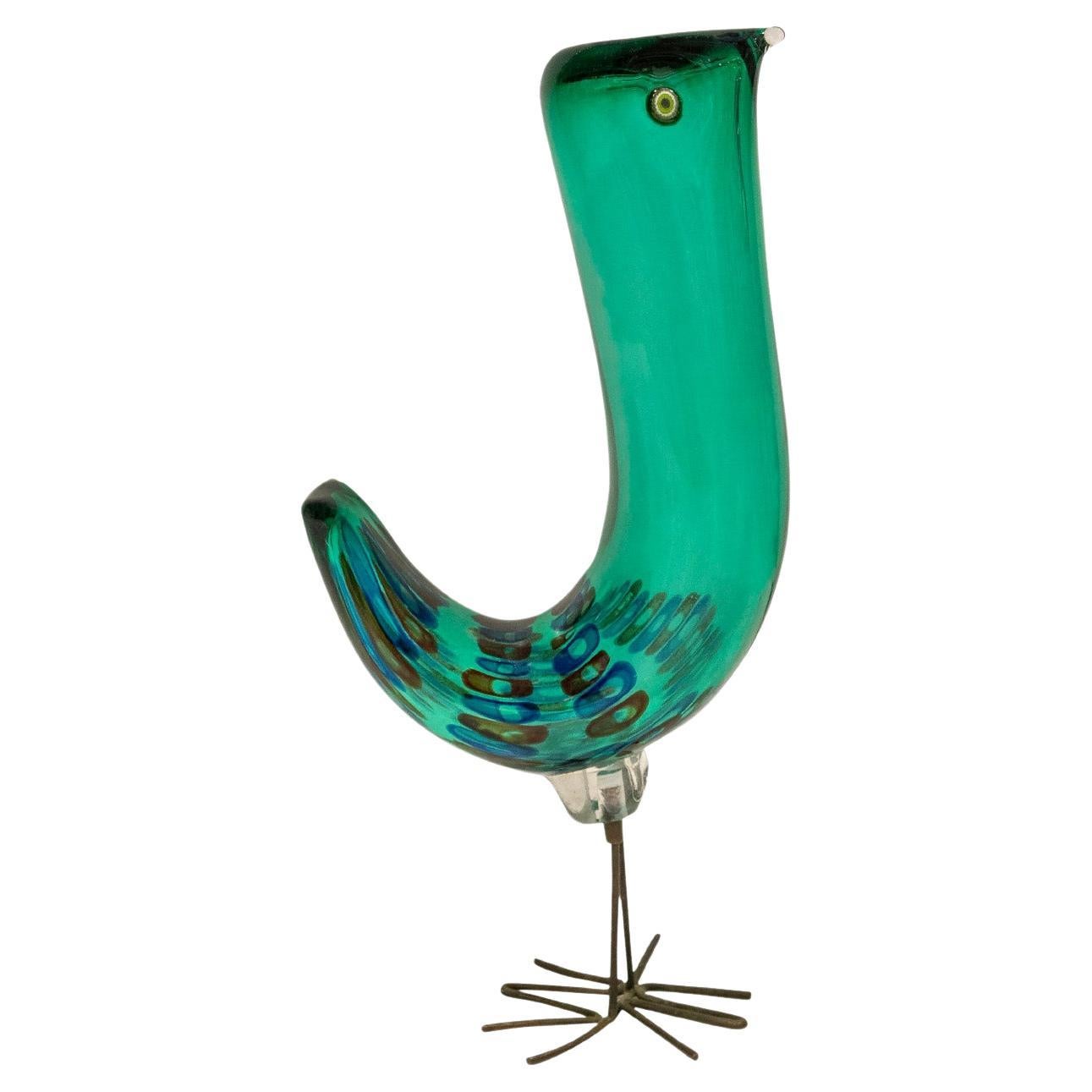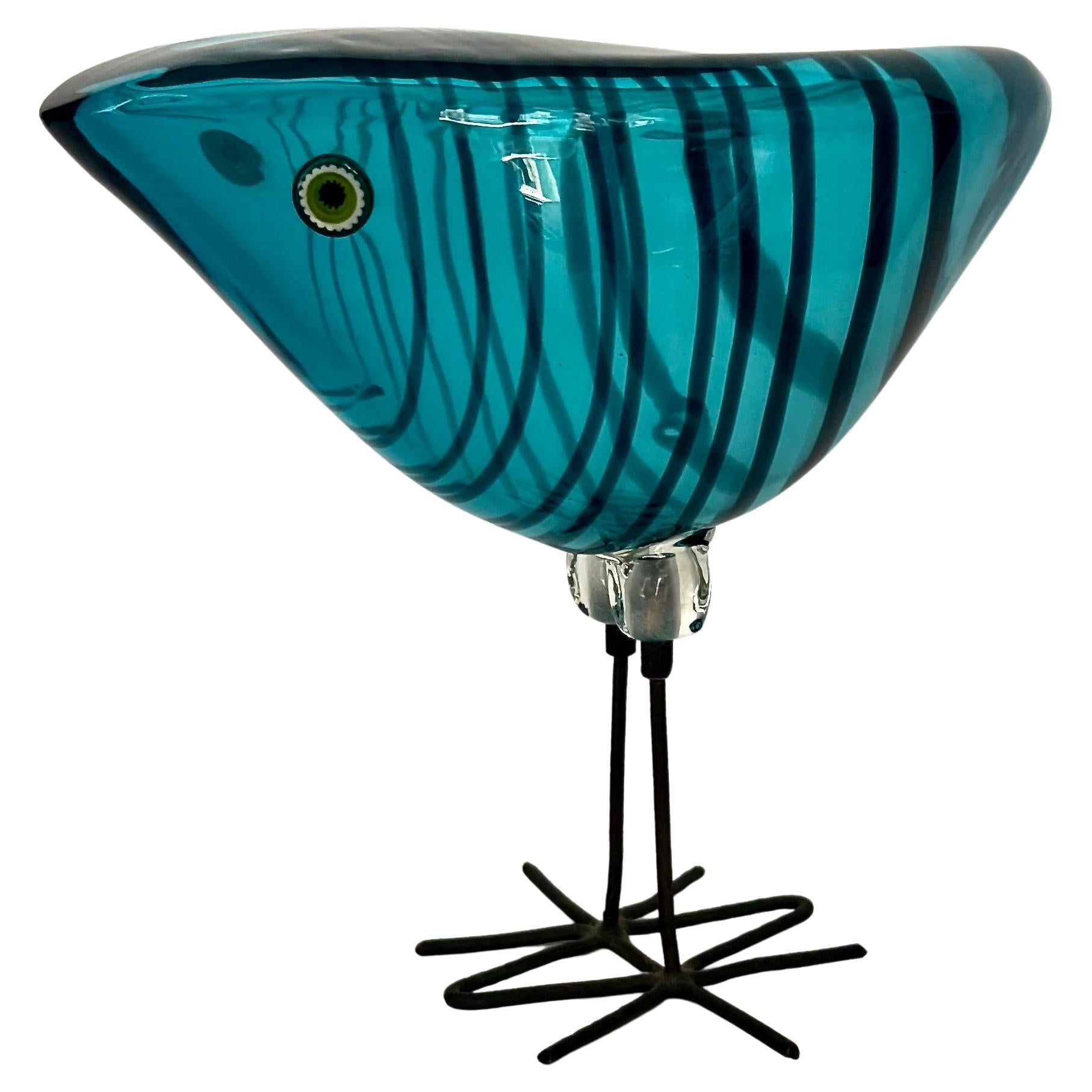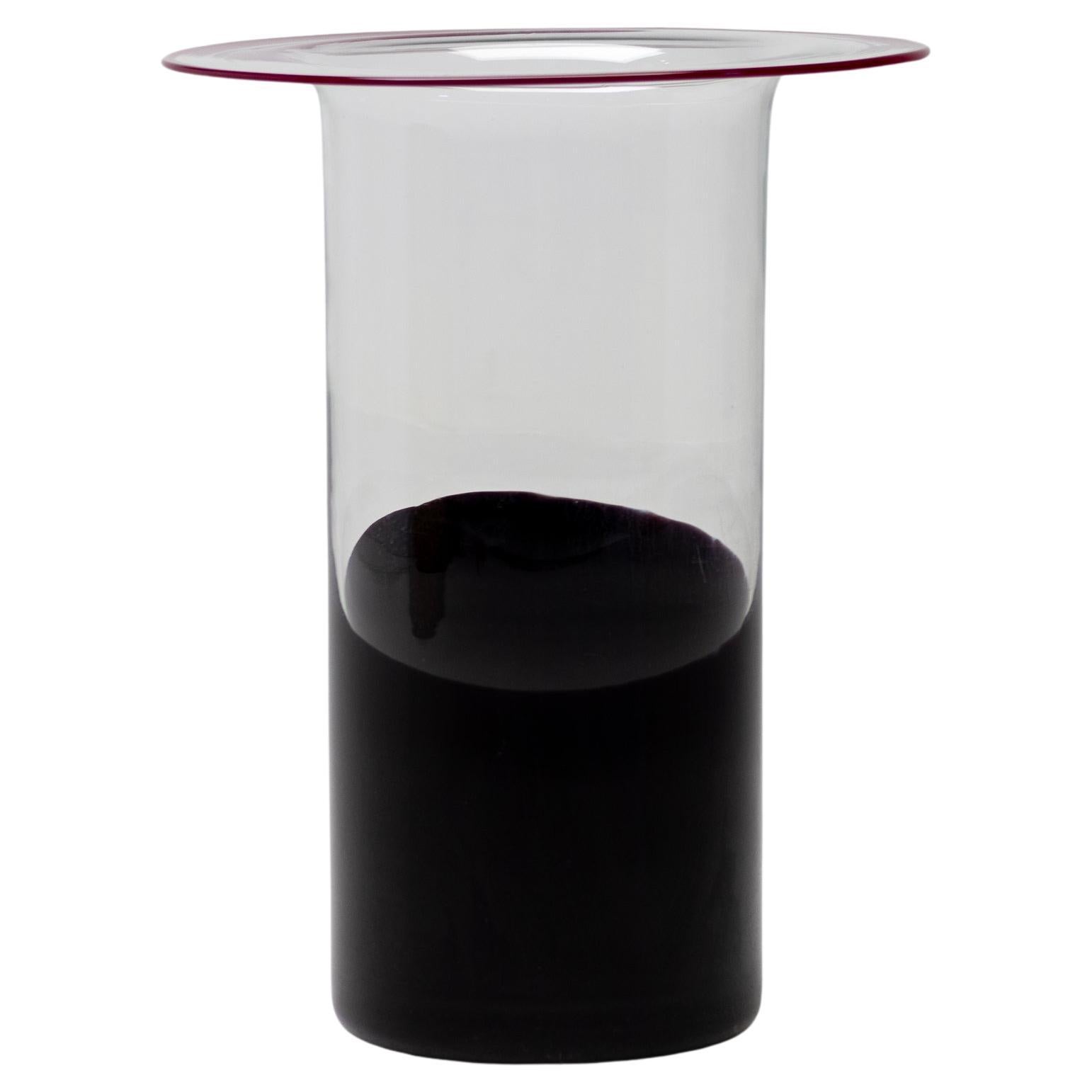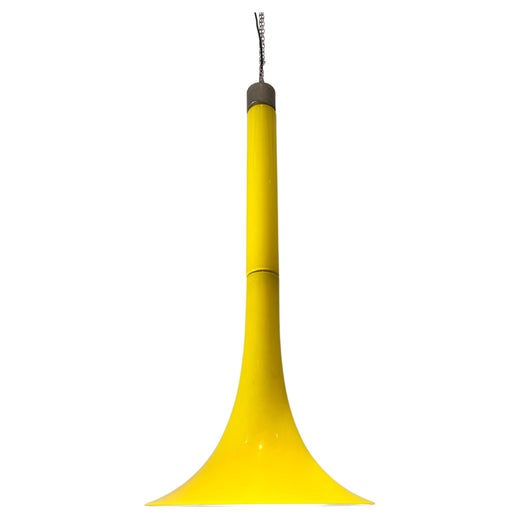Alessandro Pianon ' Pulcini ' Murano Bird Sculpture
About the Item
- Creator:Vistosi (Workshop/Studio),Alessandro Pianon (Designer)
- Dimensions:Height: 12.5 in (31.75 cm)Width: 4.5 in (11.43 cm)Depth: 3.5 in (8.89 cm)
- Style:Mid-Century Modern (Of the Period)
- Materials and Techniques:
- Place of Origin:
- Period:
- Date of Manufacture:1960s
- Condition:Wear consistent with age and use.
- Seller Location:Middlesex, NJ
- Reference Number:1stDibs: LU1080437905392
Vistosi
Demonstrative of a unique marriage between artistry and technical excellence, Vistosi lighting fixtures were born from a rich Italian glassmaking tradition. The prolific glass manufacturer came to prominence after World War II for its modernist lighting designs, and today Vistosi is known for opulent chandeliers, lamps and sconces.
The history of Vistosi reaches as far back as 1640, when the Gazzabin family of Murano opened a furnace for producing Murano glass art. "Vistoso," which was originally a nickname, became part of the family's surname and eventually the name “Vistosi” was used to refer to the family’s glass creations.
Vistosi would be recognized by the glassmakers’ guild in Murano during the late 18th century — with Gio-Batta Vistosi becoming head of the guild — but Napoleon dissolved the Venetian state and closed the region’s glass factories by 1807. The modern iteration of the Vistosi company was founded in Murano in 1945 by Guglielmo Vistosi, a Gazzabin family heir.
During the 1950s, Vistosi's grandchildren, Gino and Luciano Vistosi, began specializing in lighting. In the 1960s and ‘70s, the company worked with renowned Italian furniture designers like Adalberto Dal Lago, Ettore Sottsass and Gae Aulenti. One of Vistosi's most famous collaborations was with Italian architect and designer Angelo Mangiarotti. In 1967, Mangiarotti designed a modular crystal-hook lighting system called Giogali that has enjoyed popularity and acclaim to this day.
In 1989, Vistosi was taken over by businessman Giancarlo Moretti, who had an extensive background in the lighting industry. Moretti's son, Matteo Moretti, reinvigorated the business with a series of new design collaborations in 1993. Some of the most notable partnerships included Chiaramonte and Marin, Mauro Olivieri and Michele De Lucchi.
Vistosi has participated in every Euroluce showcase since the lighting exhibition began in 1976. In 2005, the company won the ADI Design Index award for Mangiarotti's Giogali system. In 2007, Vistosi won the Eurispes award and participated in a Compasso d'Oro competition.
Today, Vistosi is still a leader in the lighting industry, shifting to LED and creating new types of lead-free crystal glass for its stunning range of lighting fixtures.
Find a collection of vintage Vistosi lighting and decorative objects on 1stDibs.
- ShippingRetrieving quote...Ships From: Middlesex, NJ
- Return PolicyThis item cannot be returned.
- Large Signed Silas Seandel Wall SculptureBy Silas SeandelLocated in Middlesex, NJLarge Signed Silas Seandel wall sculpture.Category
Mid-20th Century American Mid-Century Modern Abstract Sculptures
MaterialsMetal
- Large Italian 1970s Brass 'Praying Mantis' Floor SculptureLocated in Middlesex, NJLarge Italian 1970s Brass 'Praying Mantis' Floor Sculpture.Category
20th Century Italian Mid-Century Modern Animal Sculptures
MaterialsBrass
- Leo Lionni Original No. 1 of 6 Sculpture the "Giraluna" from Parallel BotanyBy Leo LionniLocated in Middlesex, NJThe giraluna is a spectral plant entity from Leo Lionni's Classic alternate universe textbook Parallel Botany. About the Sculpture: The Giraluna This elusive and capricious plant is the Dream Queen of parallel botany. Hydendorp, quite rightly, does not hesitate to define it as the "most parallel of plants, most plantlike of the parallels," and in so doing he stresses not so much its physiognomic oddnesses as the disconcerting normality of its shape. "If we were in the jungle," he writes, "and we found one blocking our way, we would not for an instant hesitate to hack it down with our machetes."1 But it will not be our good fortune to encounter it. If in reconstructions the Giraluna displays considerable plantness of form and an exact and convincing solidity, in its natural environment it can be perceived only as a nebulous interplay of glimmerings and empty spaces which alternate in the darkness and vaguely suggest where its outlines might be. (pl. XXIV) Its nocturnal presence, in fact, is manifested almost entirely in terms of the equivocal O'-factor of the moonbeams, which was discovered and measured a few years ago by Dennis Dobkin of the Point Paradise Observatory. This factor changes the light-shade ratio which normally defines volumes into a subtle interplay of lucencies and opacities, so that our perceptions, our basic sensorial habits conditioned by thousands of years of daytime life in the "solar key," would need complete readjustment and indeed reversal in order to come to terms with it. Daylight isolates objects, bestowing a noisy Meaning on all the odds and ends in the world. But night takes everything away except the very soul of things: a black light, a transparent darkness, a secret we cannot grasp. During the long night of the Erocene era man caught a glimpse of the Giraluna rising mysteriously in its barren landscape. Presolar man imagined himself the child of the Moon. In her lap he had known the comfort of the life, silent torpor of the night, and by her light he had seen silver pearls lie weightlessly upon the coronas of the first great flowers. But he left us only a few enigmatic signs of all this: the Feisenburg cave, the petrified bones in the Ahmenstadt tumulus, the Boergen Cup. Paradoxically enough, all that we do in fact know of his presence in that landscape comes to us from our study of his nocturnal vegetation, Around the middle of the Erocene era, when the flowers of night were fading away in the light of a new dawn, man saw that outlines and colors were slowly hardening. Thus he discovered the stone-hard world of day, and learned to be the child of both Sun and Moon, of Amnes and Ra, of Disarm and Karak, of Nemsa and Taor. The "crawling stones" of Yorkshire, the stele of Tapur, the graffiti of Klagenstadt, these have preserved for us the nearly obliterated images of the two divinities who from the center of their temples drew the design of the universe. But the Sun was not long in attaining absolute power over everything in the world. "O Ra, o Amno Ra our benefactor, glowing and flaming! Gods and men bow down before you, for you are their creator and their only Lord." Such was the prayer of Amresh, High Priest of Egypt. And a new vegetation, outspoken and exuberant, appeared on the earth, and made the bright leaves dance in the morning breeze. Night soon became no more than a dark corridor joining one day to another, a place of visions and memories, a storehouse of words and images. It became a secret refuge where the vanished flowers could once more flaunt their coronas to the Moon. And thousands of years later the black flowers of that distant night-Giraluna, Lunaspora, Solea argentea-were born from seeds hidden deep in a soil rich with legends and stories. If our knowledge of the Giraluna is today reasonably complete and detailed this is due to the industry and scholarship of Professor Johannes Hydendorp of the University of Honingen, who has collected and collated all known facts and kept his records abreast of the latest developments. Our historical and geographical information comes from the most varied sources: legends and folk tales handed down from generation to generation, accounts given by explorers, anthropologists, and paleontologists, and of course the more recent testimony of botanists such as Heinz Hornemann and Pierre Maessens. Source: Sivatherium. narod .edu About Sculpture: Leo Lionni is best known today for his children's books: Little Blue and Little Yellow; Frederick—the one about the mouse who gathers poems while his family is harvesting seeds for the winter—Swimmy the Fish. Of course the children don't remember his name, but to parents and grandparents, the ones who actually do the reading, he is something of a celebrity. Most people don't realize that Lionni is also one of the 20th-century's most influential graphic designers. Within that field, he is a legend. In fact, he didn't start doing children's books until he had left the world of advertising, teaching, and design to allow more time for contemplation and for art. Little Blue and Little Yellow (1959) began as an improvised entertainment for bored grandchildren. What can you do with a few scraps of colored paper and a lot of imagination ? Make the first best-selling children's book illustrated with abstract art. Before that his work as design director for Olivetti Corporation of America and the art director of Fortune magazine, the co-founder of the Aspen...Category
20th Century American Mid-Century Modern Abstract Sculptures
MaterialsSteel, Bronze
- Danny Alessandro Fireplace ToolsBy Danny AlessandroLocated in Middlesex, NJDanny Alessandro fireplace tools.Category
20th Century American Mid-Century Modern Fireplace Tools and Chimney Pots
MaterialsMetal
- Danny Alessandro Fireplace Tool SetBy Danny AlessandroLocated in Middlesex, NJDanny Alessandro fireplace tool set. Log holder: 17" D x 4.5" W x 16" H.Category
20th Century American Mid-Century Modern Fireplace Tools and Chimney Pots
MaterialsMetal
- Large Camer Murano Table LampBy Camer GlassLocated in Middlesex, NJLarge Camer Murano table lamp. Camer label attached.Category
20th Century Italian Mid-Century Modern Table Lamps
- Alessandro Pianon Pulcini Glass BirdBy Alessandro PianonLocated in West Palm Beach, FLAn Orange Pulcini Bird Designed by Alessandro Pianon and manufactured by Vistosi c. 1963o Smooth surface with copper legs. Minor carbon black spot, whi...Category
Vintage 1960s Italian Animal Sculptures
MaterialsArt Glass
- Alessandro Pianon Bird (pulcino) for VistosiBy Vistosi, Alessandro PianonLocated in Brussels, BEGreat Alessandro Pianon for Vistosi Murano art glass bird. Iconic design. Fine and good condition, free of any chips, cracks, or repairs "Pulcini" Bird (c.1963)Category
Vintage 1960s Italian Mid-Century Modern Animal Sculptures
MaterialsArt Glass
- Alessandro Pianon Rare Hand Blown Glass Bird for Vistosi 'Murano' 1963By Alessandro Pianon, VistosiLocated in New York, NYRare hand blown glass bird, Pulcini Series, green with red and blue murrhines with copper feet by Alessandro Pianon for Vistosi, Murano Italy, ca...Category
Vintage 1960s Italian Mid-Century Modern Animal Sculptures
MaterialsCopper
- Alessandro Pianon for Vistosi, Pulcino, 1962By Alessandro Pianon, VistosiLocated in London, GBAlessandro Pianon for Vistosi, Pulcino, 1962 A Beautiful wedge shaped "Pulcini" bird glass sculpture in blue with dark blue decorative spira...Category
Vintage 1960s Italian Mid-Century Modern Animal Sculptures
MaterialsBlown Glass
- Alessandro Pianon (1931-1984) Pulcino - MuranoBy Alessandro PianonLocated in TOULON, FRAlessandro Pianon (1931-1984) Pulcino Poussin en Verre de Murano et cuivre Production Vetraria Vistosi, Murano, Italie Date de création: vers 1962 Poids: 590 g Région: Italie Dimen...Category
Vintage 1960s Italian Other Animal Sculptures
MaterialsMurano Glass
- Huge Vistosi Murano Glass Vase by Alessandro PianonBy Alessandro Pianon, VistosiLocated in Dronten, NLBeautiful Vistosi cylinder hat shaped vase in clear glass with partial black glass at the bottom and a Vistosi trademark red glass edge. Designer Alessandro Pianon started working fo...Category
Vintage 1960s Italian Mid-Century Modern Vases
MaterialsMurano Glass
